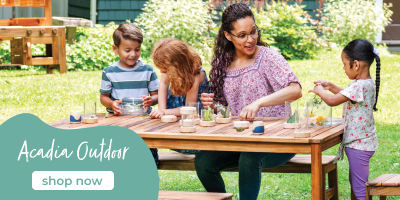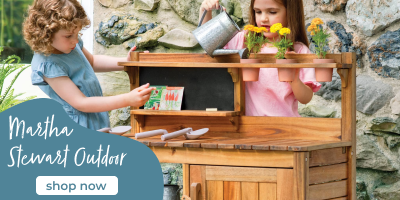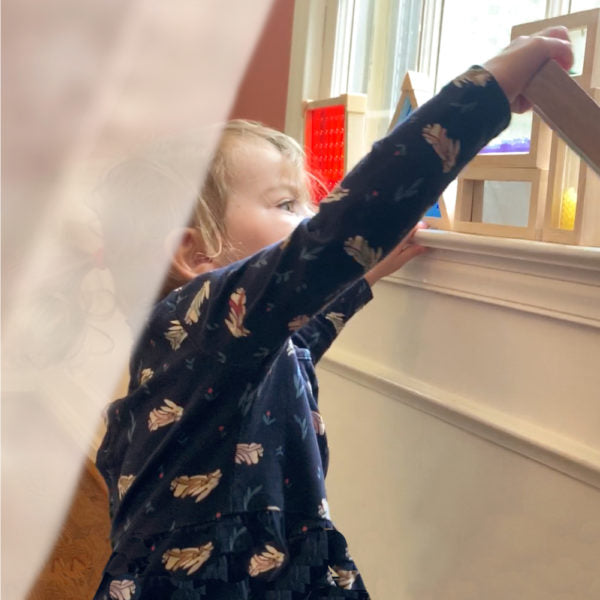How to Bring Back Your Life’s Rhythms: Balancing Screen Time with Art Time

Increased screen time can have a great - and potentially detrimental - impact on young children's social, emotional and cognitive growth.
Young children learn best through:
- Active exploration of sensory-rich indoor and outside environments
- Hands-on engagement with open-ended and multi-dimensional authentic learning materials
- Opportunities for freedom of physical movement
- Positive and responsive relationships with humans
Screen Time Negatively Impacts Child Development

So, given these best practices for young children’s learning, where does e-learning fit in? It doesn’t. In fact, a research study conducted by National Institutes of Health in 2018 found
“children who spend more than two hours a day on screen-time activities scored lower on language and thinking tests and some children with more than seven hours a day of screen time experienced thinning of the brain’s cortex, the area of the brain related to critical thinking and reasoning.”
Research has shown that young children learn best, not through pen and pencil or computer activities, but through imaginative and creative play. There is also undeniable evidence indicating young children who experience large amounts of screen time may show significant decreases in focus and attention. As important, something known as Dynamic Systems Theory positively links the development of big body movement to the development of children’s cognition. All this evidence points to fact that very young children learn less from the screen and more from physically active, real life experiences. But what’s a parent supposed to do if the school is requiring their children to sit in front of the computer during school hours?
One solution is to limit screen time to only school hours (except for perhaps special viewing times on weekends). If school is out, then the household screens like iPads, television, and computers should be powered down. Once the screens are turned off, children’s (supposed) boredom will set in unless you wisely plan for off-screen times with meaningful and engaging hands-on learning experiences. One idea is to create a place where the entire family can engage in creative art experiences.
Art Time Positively Impacts Child Development

There is a strong connection between children’s engagement with creative arts (i.e., drawing, painting, dancing, writing) and later success in life. Researchers at Michigan State University found children who had frequent exposure and opportunities to experience a wide variety of arts and crafts were more likely to become inventors, innovators, and experts in science and technology.
Other benefits of art for young children include:
- Promotes self-esteem when mastering skills (i.e., cutting, pasting) and completing projects.
- Encourages small muscle development (a precursor for writing skills) when cutting with scissors, coloring with crayons, or painting with a paintbrush.
- Fosters executive function, which is the ability to focus, exhibit self-control, and increased attention span—all of which are important pre-reading skills.
- Increases opportunities for creativity and problem solving
Some ideas to get you started:

#1: Designate & Name the Space
Find a space to designate as an artmaking area where all family members can imagine and create. The physical space should be out-of-the-way and in an area that it doesn’t matter if there are ongoing projects or small messes. It could be located in the garage, basement, outdoors on the porch, or under a tree. Naming the designated area, such as Imagination Station, is helpful for giving importance and value to the new territory within the home or in the backyard.

#2: Organize the Stuff
The most important element of an artmaking area is stuff like crafting supplies, construction materials, and loose parts from nature such as seashells, pinecones, and sticks, and containers for storing all the stuff.
Be creative with finding containers for the artmaking area. Old flower pots or wicker baskets, for example, work great to store materials. Containers don’t have to match and be made out of the same material. All they really have to do is hold the stuff.

Tips for storage:
- Plastic containers filled with popcorn kernels creates a nifty storage trick for magic markers that keeps them visible and accessible.
- Try organizing art supplies using bricks, small wooden bowls, and plastic flower vase. Stack bricks on top of each other for taller objects such as rulers.
- Store loose parts in a divided wooden container.
#3 Work Surfaces are Important
Flat surfaces are needed for creating family art. Farm tables are perfect for art projects because of their size, but if you do not have enough room to accommodate such a large piece of furniture, you can construct a simple table out of cinderblocks and a piece of plywood or attach 4 legs to a door to make a quick, very affordable table. If space is an issue, consider creating a table by hanging a shelf on the wall.


















